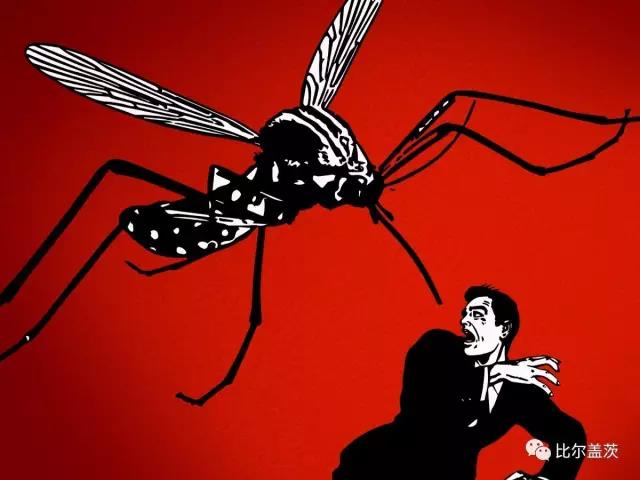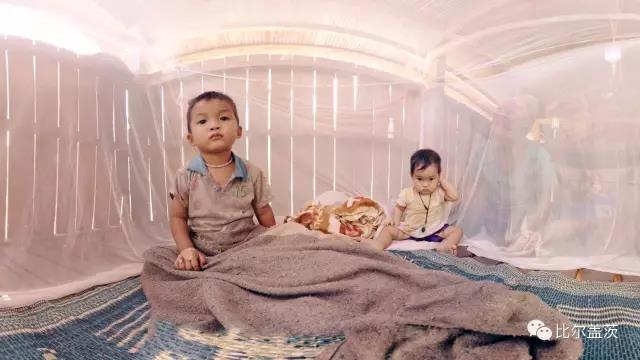
比尔·盖茨:以你的名义做出一笔捐赠
精华 发表在 b站老司机 08-17 10:14:53
比尔·盖茨:答对这道题,我将以你的名义做出一笔捐赠
本文转自比尔盖茨微信公众号。
编注:如果你想加入捐蚊帐的公益行动,扫描文章下方二维码跳转到Gatesnotes.com回答一道选择题。题目很简单,答案就藏在下面这篇文章里。
我们过去只会怪星星。时至今日,我们已经取得了长足的进步。
上万年来,疟疾一直让人类生活在恐惧之中,但是大多数时间里,我们对疟疾的发病原理一无所知。古希腊人认为天狼星或许是引发疟疾的罪魁祸首,公元前270年的中医书推测这种疾病是由三个恶魔散播的,而到19世纪中叶,医生认为疟疾是附近沼泽的瘴气飘进城中引起的(“疟疾”这个词意大利语的意思是“恶浊的空气”)。
现在,我们认清了谁才是我们真正的敌人——蚊子。医生不再让疟疾患者接受放血和嚼树皮等痛苦(而且没有意义)的治疗,最重要的是,面对这种在2000年一年间就导致约87万人死亡的疾病,我们的抗击工作已经取得了重大进展。
这项进展是近年来全球健康领域最为卓越的成果之一。去年,42.9万多人因疟疾而死,其中大部分来自非洲和东南亚。虽然这个数字仍然很高,但与21世纪初期疟疾最为肆虐的时期相比,死亡人数已经总体下降了 50%。我不轻易使用“奇迹”这个词,但这个数字是个名副其实的奇迹。
我们是如何做到这一点的呢?我认为,这要归功于全球在抗击疟疾方面的投入与合作出现了史无前例的增长——从2000年到2015年,疟疾防治资金增长了9倍。这些资金推动实现了多项重大科研突破,使我们能够大规模推广科研成果,将更多精力集中在改善疾病控制和治疗的工作上。

今年10月,距离我和梅琳达第一次提出消除疟疾的倡议将过去整整十年。在当时这个举动极具争议,但是截至现在的发展成果,已经使很多人相信这个目标是可以实现的(虽然仍有一些人会质疑)。
如果我2007年就能知道十年后我们将取得如此巨大的进步,我肯定会为死亡率的大幅下降感到欢欣鼓舞。我也会深深震撼于现在投入使用的驱虫蚊帐竟有如此之多,新型疗法为帮助人们治疗严重疟疾病例发挥了如此重要的作用,快速诊断工具让病人的发现与治疗变得如此简单。但是事情也有不尽如人意之处。
2007年的时候,我以为十年后我们应该已经有了长效疟疾疫苗。世界卫生组织计划明年在撒哈拉以南非洲开始第一代疟疾疫苗的试点接种示范工程,不过如果不打加强针,这种疫苗对儿童的保护效力只能维持不到6个月。我坚信,再过十年,研究人员一定会研发出保护期更长的下一代疫苗。只是十年前,我对我们今天的发展状况过于乐观了。
不过,仍然有很多理由让我们相信疟疾是可以根除的。在抗击疟疾及其传播媒介蚊子的斗争中,我们一直都是全面出击。请大家看看我们目前开展的一系列创新研究:
- 新型驱虫蚊帐:旧版蚊帐每6个月就需要放置于特制杀虫剂溶液中浸泡一次。而我们将在莫桑比克免费派发的长效驱虫蚊帐,则可以在三年的时间里保护人们免受蚊虫叮咬,甚至脏污以后也可以进行清洗。不幸的是,有些蚊子已对这些蚊帐中使用的除虫菊酯杀虫剂形成了抗药性,因此研究人员目前正在开发下一代驱虫蚊帐,这种蚊帐混合使用杀虫剂,能够有效对抗包括已经形成了抗药性的所有蚊子。

- 应对抗药性:在东南亚,我们已经发现有若干种类的疟原虫对我们用来治疗和预防这种疾病的药物组合形成了抗药性。如果这种抗药性扩散到非洲,那将会是一场灾难。值得庆幸的是,我们前线的合作伙伴正在想尽办法予以回击。点击文末“阅读原文”观看我最新的VR视频,了解一个在泰国的研究团队正在进行的了不起的工作,他们正试图解决在当地出现的抗药性问题。
- 疾病地图测绘:相比历史上任何时期,我们对疟疾出现的地理位置有了更多的了解。公共健康专家将从手机记录中获取的匿名数据与疟疾发病数据相结合,来追踪受感染蚊子的运动轨迹。这非常宝贵,因为它可以帮助国家将有限的资源投入到疾病防治负担最重的地方。
- 屋檐管道:热带地区的很多房子在屋檐和墙壁之间留有一段空隙,以保持室内凉爽。将这些缝隙封死,并在屋顶线下插入特制管道,确保空气流入室内的同时,还可以用筛网过滤器将蚊子拒之门外。鉴于管道所在位置高于儿童所能接触的范围,可以在筛网涂上高剂量杀虫剂以杀死包括有抗药性的所有蚊子。
- 基因组编辑:我们的基金会投入了大量资金用于蚊子基因序列编辑的研究。我们仍处在研发的初级阶段,不过科学家正在探索这种技术是否有朝一日能使少量核心种类的蚊子失去繁殖或携带疟原虫的能力。
- 定向糖饵法:只有雌性蚊子才会叮咬人类,而且它们只有在繁育期才会这么做。其他时间,它们都是依靠糖来获取能量。这些挂历大小的捕蚊器悬挂于室外,所含毒性危害值极低,但可以杀死95%被甜味吸引而来的蚊子,同时不会影响传粉昆虫。这种方法正在马里进行试点。
我想我将在有生之年看到疟疾被彻底消灭。疟疾是一种可以预防并且可以治疗的疾病,公共卫生领域的各项成就已经证明,减少疟疾传播范围、挽救患者生命是可能的,这些正在研发中的新型工具也将会对我们目标的实现发挥巨大作用。虽然我们距离让疟疾从地球上消失还有数十年的路要走,但有一件事是确定的:蚊子已经遇到了它的对手。
编注:长按识别下方二维码或在浏览器地址栏输入http://b-gat.es/2i2sATJ,在网页最下方的答题栏里勾选答案(上面的投票为题目翻译),答对后用电子邮箱地址注册,我们将以你的名义为非洲有需要的家庭捐赠一顶蚊帐。

Mosquito Wars
The progress we’ve made to reduce malaria deaths is one of the most remarkable global health stories in recent years.
We’ve come a long way since the days of blaming the stars.
Malaria has terrorized humankind for thousands of years, but for most of that time, we had no idea what caused it. The ancient Greeks thought Sirius the dog star might be responsible. A Chinese medical text from 270 BCE speculated that three demons spread the disease. As recently as the mid-1800s, doctors believed malaria was caused by the stinky fumes that wafted into cities from nearby swamps (the word malaria means “bad air” in Italian).
Today, we know exactly who our enemy is: the mosquito. Doctors no longer subject malaria sufferers to unpleasant (and pointless) treatments like blood-letting and chewing tree bark. Most importantly, we’ve made massive progress in fighting a disease that as recently as 2000 killed nearly 870,000 people in a single year.
This progress is one of the most remarkable global health stories in recent years. Malaria claimed more than 429,000 lives last year, mostly in Africa and Southeast Asia. While that figure is still way too high, it represents a 50 percent reduction overall from the disease’s peak in the early 2000s. I don’t throw the word “miracle” around lightly, but that number is nothing short of miraculous.
How did we get here? I give credit to an unprecedented scale-up in global commitment and cooperation – malaria funding rose by 1,000 percent from 2000 to 2015. This money fueled a number of amazing scientific breakthroughs, enabled us to deliver them at scale, and focused more brainpower on improving both control and treatment efforts.
This October marks a decade since Melinda and I first called for eradicating malaria. It was a controversial move at the time, but the progress made since then has convinced many that this is a realistic goal (although some are still skeptical).
If I had known back in 2007 how much progress we would make in ten years, I would’ve been thrilled by how much we’ve cut the death rate. I’d also be impressed by how many insecticidal bed nets are now in use, how new treatments are helping people with the most severe cases of malaria, and how rapid diagnostic tests have made it easier to find and treat people. But it wouldn’t all be good news.
In 2007, I thought we’d have a long-lasting malaria vaccine by now. The WHO plans to begin pilot demonstration projects of a first-generation malaria vaccine in sub-Saharan Africa next year, although without a booster dose it only protects a child for less than six months. I’m hopeful that researchers will develop a next generation vaccine that offers much longer protection within the next 10 years, but a decade ago I was overly optimistic about where we’d be today.
There are still plenty of reasons to believe we can eradicate malaria, though. In the war against malaria and the mosquitos who carry it, we’re already fighting on every front. Consider the wide array of innovations in development right now:
- New Insecticide-Treated Bed Nets: The older generation of bed nets needed to be soaked in a special insecticide solution every six months. The long-lasting nets we will distribute in Mozambique through our giveaway protect people from mosquitoes for three years and can even be washed when they get dirty. Unfortunately, some mosquitoes are now developing resistance to the pyrethroid insecticides used in these nets – so researchers are working on next generation bed nets that use combinations of insecticides and appear effective against all mosquitoes, including insecticide-resistant ones.
- Tackling Drug Resistance: In Southeast Asia, we’ve seen some types of the malaria parasite develop resistance to the drug combinations we use to cure and prevent the disease. If this drug resistance spread to Africa, it’d be a disaster. Fortunately, we have partners on the front lines finding ways to fight back. Please click the link at the bottom of this page to watch a VR video about the amazing work one team of researchers is doing to combat drug resistance in Thailand.
- Disease Mapping: We know more today about where malaria is occurring than we have at any other point in history. Public health experts are combining anonymous data from mobile phone records with data on malaria incidence to track the movements of infected mosquitoes. That's super valuable, because it helps countries use their limited resources in places that have the highest disease burden.
- Eave Tubes: Many houses in hot climates have a gap between the roof and the walls to keep the inside cool. By sealing these gaps and inserting special tubes just below the roofline, air still flows into the house but keeps mosquitoes out with a mesh filter. Since the tubes are too high for children to reach them, the mesh can be coated with a high enough dose of insecticide to kill even insecticide-resistant mosquitoes.
- Genome Editing: Our foundation has invested a lot of money into editing the genetic code of mosquitoes. We’re still in the very early stages of development, but scientists are exploring whether this technique could one day render a small number of key mosquito species infertile or unable to carry the malaria parasite.
- Attractive Targeted Sugar Baits: Only female mosquitoes bite people, and they only do it when they’re breeding. The rest of the time, they rely on sugar for energy. These calendar-sized traps hang on the outside of homes and contain a minimum risk toxin that kills more than 95 percent of the mosquitoes that flock to their sweet scent without affecting pollinators. Trials are underway in Mali.
I think we will see an end to malaria in my lifetime. It’s a preventable and curable disease, and the public health community has already demonstrated that it’s possible to shrink the map and save lives. These new tools in the development pipeline will play a huge role in reaching our goal. While we’re still decades away from wiping malaria off the map for good, one thing is clear: the mosquito has met its match.
-
 GPersian
GPersian

